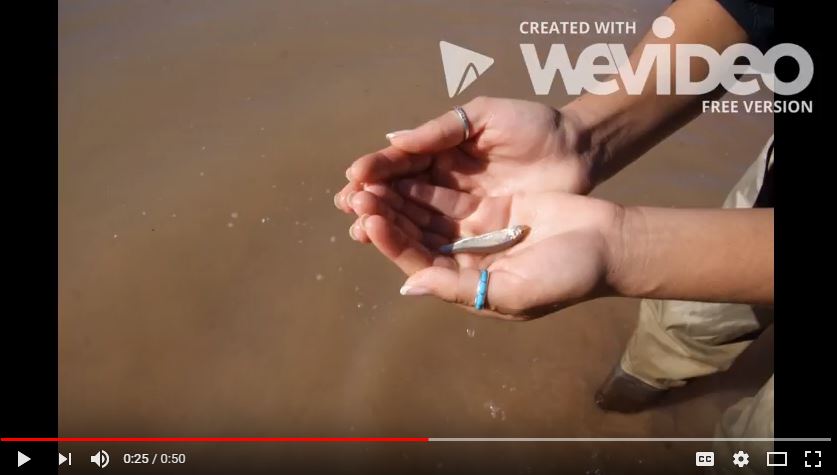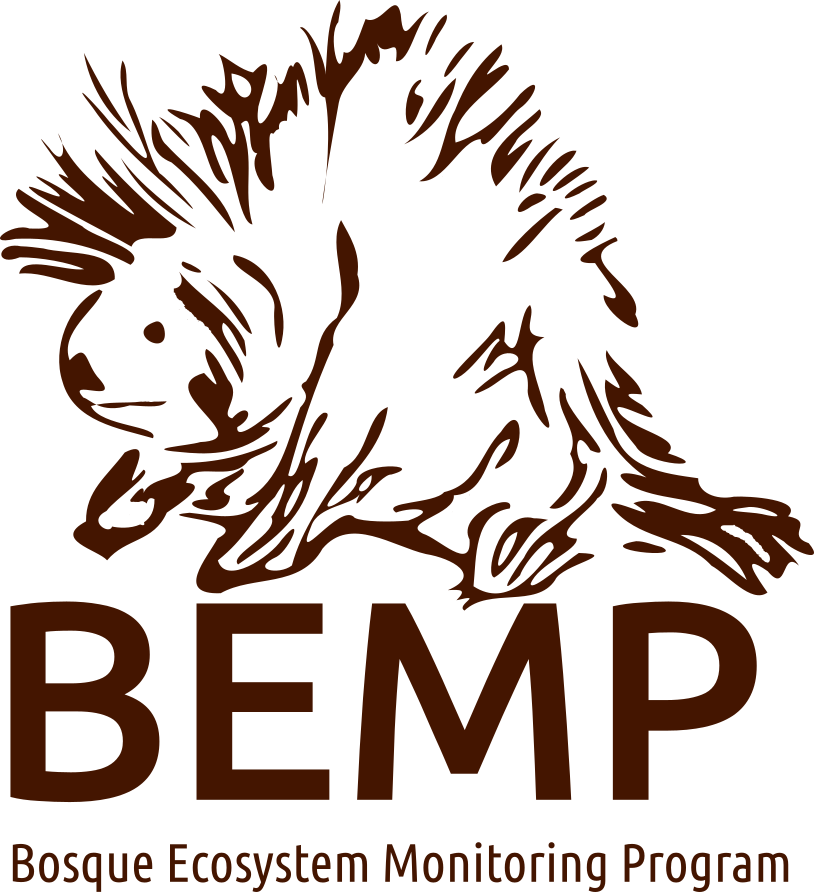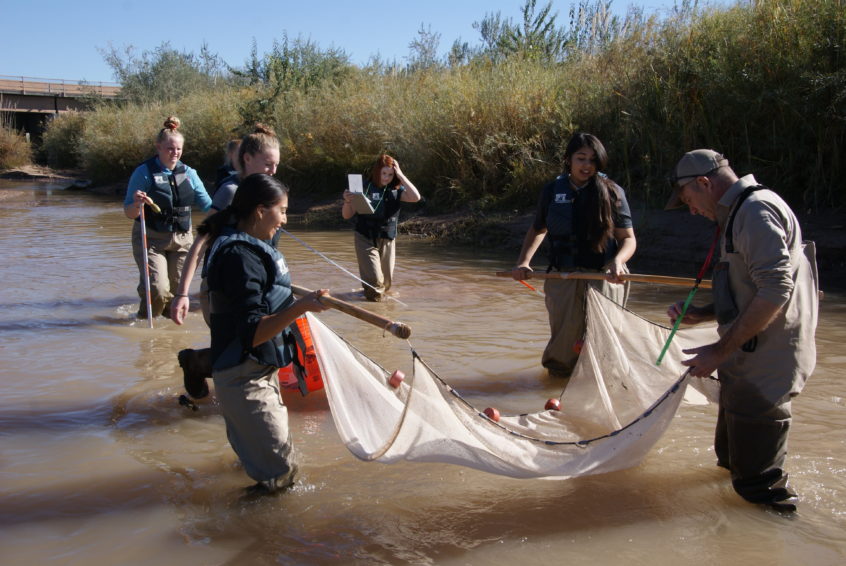Building from our own experience as BEMP students from 6th grade, we, the Wildlife Biology class at Bosque School, have participated in many activities related to the bosque and the Rio Grande watershed. In the classroom this year, we learned about native and exotic fish of the Rio Grande. We then helped the US Fish and Wildlife Service with their collection of fish in the Rio Grande for their Native Fish in the Classroom Program.
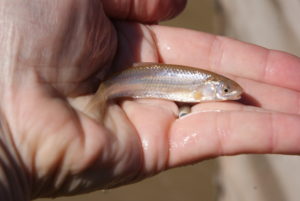
Rio Grande silvery minnow
When we were in the river we were able to collect many different types of fish including the Rio Grande silvery minnow (an endangered species), the red shiner (both of which are native fish), and the the channel catfish (an exotic fish). We were able to collect species data about the silvery minnow that we caught and then we released all the fish back into their habitat once we were done recording what we needed. The non-endangered, native fish were gathered for eventual placement in classroom aquariums across Albuquerque.
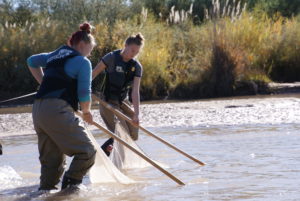
On October 10, 2017, we participated in the 8th Annual Rio Research Roundup. This event is an international student project that was created to help educate people about the Rio Grande. Over 100 teams of students from across Colorado, New Mexico, Texas, and Mexico were present at the event. Every team needed to test the water quality in the Rio Grande at their monitoring site and many teams did other projects that related to the river’s health.

For our New Mexico location we collected data from the part of river that we could access near Montano Bridge in Albuquerque. The river temperature was 20 degrees Celsius at the time of data collection (2pm). We concluded that the average pH level was 8. Along with this, we found that the average nitrate level was 5 PPM. The phosphate average level was 1 PPM and the dissolved oxygen levels were 0 PPM. The turbidity of the Rio Grande is less than 100 NTU. The river tested positive for Coli-form bacteria and the flow rate was 33.90cm squared. At the end of our data collection at the Rio Grande, we concluded that the water quality for our testing site was a C+ (on and A-Failing scale). After comparing our data with other regions, we decided that the final water quality grade for our region was a B and the quality grade for the entire watershed is a C.
Along with the river data we collected, we made a Public Service Announcement video, short essays, photos, and a visual art piece. We divided into teams to make these projects. In each project we focused on the Rio Grande and the environment that surrounds it. We tried to incorporate all the ideas that are most important to us.
Blog post by Bosque School student Maricella Class of 2018
